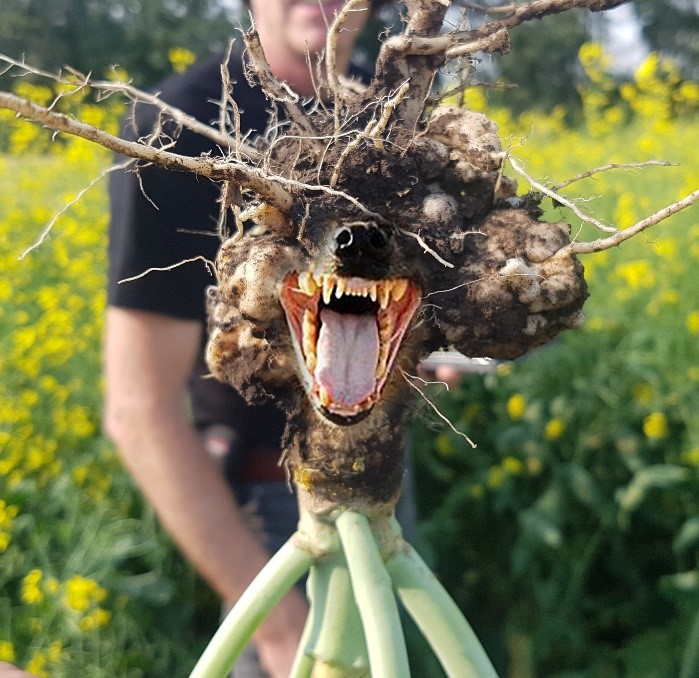When canola growers see the clubroot situation in central Alberta, a reasonable question that many likely ask themselves is how do I avoid that? Looking at all the extra management and time that arises from the hidden tumult of a positive field, such as:
- the need to step up sanitization procedures of equipment before moving from field to field (yes, especially during the peak times of seeding, spraying and harvest);
- knowing that local authorities will likely soon be on your case about how to properly manage your farm;
- knowing that there is no magic chemical to control the disease once you get it; and
- knowing that you’ll likely have to contend with all of this for the next 15 to 20 years if you don’t do anything about it.
Prevention sure starts to look better than managing the disease. The question of how to avoid a situation like this is certainly one that every canola grower should be asking themselves.
 So how can you avoid a life sentence with this pest? Fortunately, researchers have been studying this for a while now and there are a number of best management practices that can be undertaken to prevent or greatly minimize the disease from taking hold of your fields. The underlying logic behind each of them is to minimize spore load concentrations. Some of the key ones are:
So how can you avoid a life sentence with this pest? Fortunately, researchers have been studying this for a while now and there are a number of best management practices that can be undertaken to prevent or greatly minimize the disease from taking hold of your fields. The underlying logic behind each of them is to minimize spore load concentrations. Some of the key ones are:
- Get in front of the disease with frequent and thorough scouting to keep on top of any trouble spots that may emerge. Studies show that the disease tends to make its first appearance at or near the field access points. The earlier you detect, the easier it is to manage.
- A break of at least two years between canola crops allows you to better control host species such as volunteer canola, wild mustard, Shepherd’s purse, etc.
- Avoiding the use and/or application of bio-matter (i.e. straw, manure, etc.) sourced from areas suspected of clubroot.
- Avoiding the use of common seed (especially untreated) which could serve as a vector for clubroot spores.
- Finally, use clubroot-resistant varieties to help prevent infection. Contrary to some opinions, this isn’t a ruse to sell more seed. Rather, it is based on the idea that it is much easier to use genetics to prevent clubroot spores from establishing themselves on a field than to use genetics to manage clubroot spores after they get on a field. One concern about this approach is that it may hasten the ‘breakdown’ of the genetics through overuse. It is important to keep in mind that for ‘breakdown’ to occur, there needs to be a pathotype population to select from. If there is no clubroot in a field, there are no pathotypes to select for and so no risk of pathotypes ‘defeating’ the resistant genes. Of course, its not always that simple. What if you think there is no clubroot in your field but there actually is? In this scenario, the spore loads would likely still be quite low and so would the selection pressure on that pathotype population. The only way to really estimate selection pressure is to know your field, which is why it’s critical that you complement the use of clubroot resistance genetics with frequent and thorough scouting along with the other preventative tactics above to minimize the chances of undetected spore build-up.
None of the prevention tactics mentioned above are intended to be used in isolation – they are all to be done as part of an integrated prevention strategy. Minimize the risk of spore build-up by employing the sustainable use of genetics as good preventative maintenance and reap the rewards of being able to continue working on clubroot-free fields.


